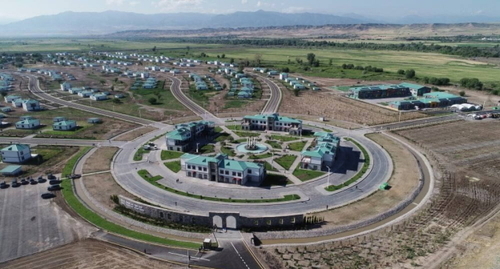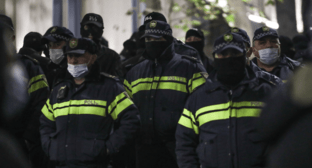
21 July 2022, 11:21
Azeri economists point out problems with migrants' return to Karabakh
The first families that moved to the village of Agaly showed their new houses and apartments. It is not enough to provide people with housing; it's necessary to ensure the operating infrastructure and create jobs, economists have noted.
The "Caucasian Knot" has reported that 1357 out of 1457 internally displaced persons (IDPs, or forced migrants) has expressed their desire to return to the village of Agaly in the Zangilan District, which, following the outcomes of the 2020 autumn war, came under Azerbaijan's control. At the first stage, it is planned to move 41 families; ten families have already moved in.
The full-scale combat actions took place in Nagorno-Karabakh in the period from September 27 to November 9, 2020. The "Caucasian Knot" has released a map on what territories Azerbaijan got after the autumn war.
One- and two-story cottage-type houses with a different number of rooms and their own land plots have been built in the village, which the State Committee for Refugees and IDPs handed over to the families who had left Agaly during the first Karabakh war.
On July 19, the first 10 families returned to Agaly; three more groups of returnees are planned, an official from the above State Committee told the "Caucasian Knot".
"I hope that the role of the state in Karabakh will not end with the construction of new houses for repatriates. It's not enough to give housing to people; it's necessary to ensure the functioning of the infrastructure and various economic facilities that complement each other. For example, the returning Karabakh residents will breed cattle and grow vegetables. Therefore, there should be the production of fodder, fertilizers and leasing of agricultural equipment close to them, so that people have no need to bring all that from Baku and overpay," Natig Djafarli, an economist, has suggested.
"The return and residence of Azerbaijanis is dangerous in Zangilan until the final conclusion of peace with Armenia. Mines and unexploded shells still remain non-removed. All this creates a danger to settlers' lives," Arif Yunus, a historian, told the "Caucasian Knot".
This article was originally published on the Russian page of 24/7 Internet agency ‘Caucasian Knot’ on July 21, 2022 at 04:54 am MSK. To access the full text of the article, click here.
Author: Kyamal Ali Source: CK correspondent




